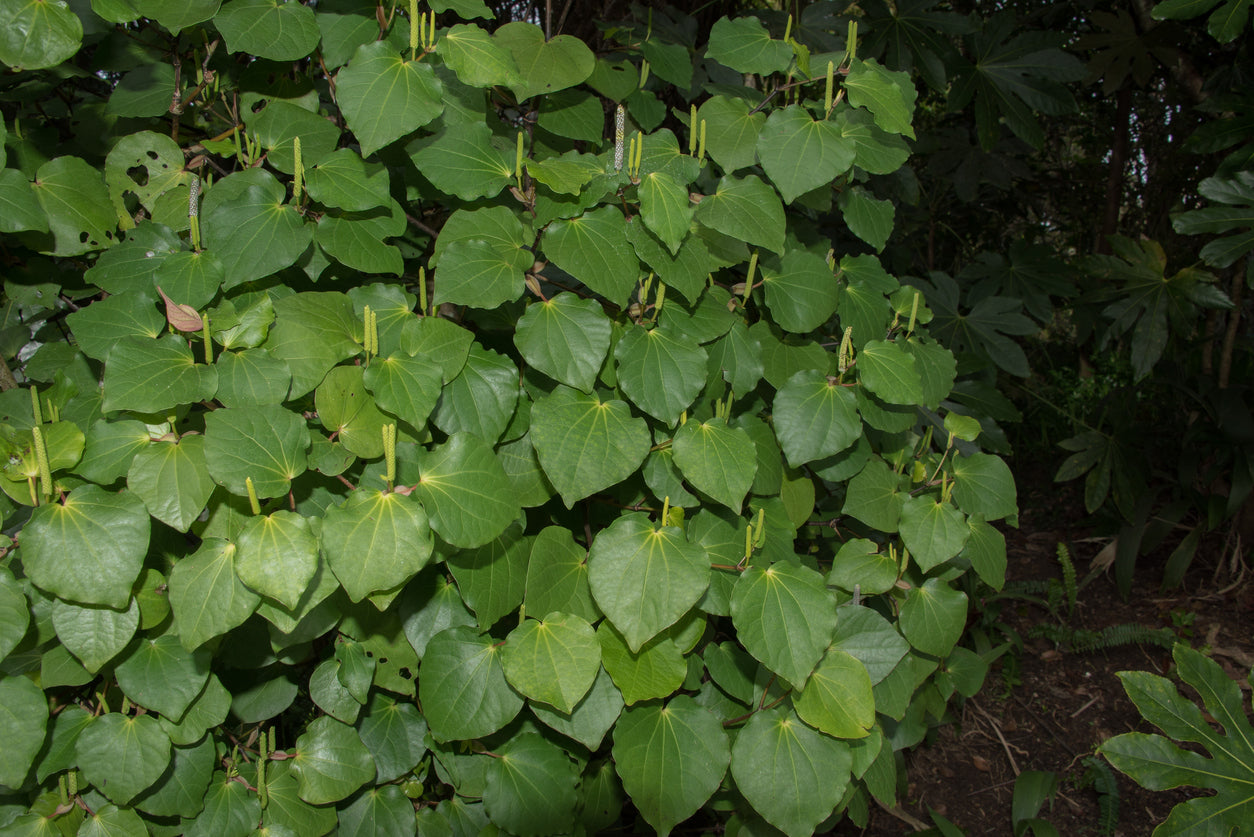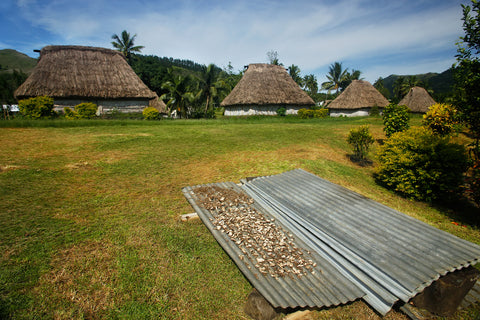
Before you know how farmers cultivate kava, it is important to know about the kava plant itself. Kava comes from the piper methysticum plant. This plant is only found in Oceana, or the Pacific Islands.
Many people around the world are trying to grow kava from seed in their backyard or inside their homes, and some may be successful. However, they will never be able to match the soil quality, the humidity, the temperatures, the amount of rain and the cultivation process used by those in the Pacific.
There are many factors in play when growing kava. Here, we break down how the kava plant is grown and cultivated in the Pacific Islands.
How Kava is Grown
Cuttings from kava plants are taken and planted by farmers in other areas of the Pacific Islands. This must be done because a kava plant cannot reproduce on its own.
Some farmers find kava grows best on the side of a hill or in an area that is protected from intense winds. Kava is not necessarily a plant that likes to be alone. Meaning, it grows better when planted among other trees and plants.
Kava likes water, but it does not grow well in standing water. The soil needs to be able to drain the water properly. Once the kava plant gets older, it prefers a lot of sun. But this is not the case for younger kava plants.
The soil used to grow kava can mean the difference between a thriving, healthy plant and a plant filled with fungus and mold.
Without these things, obtaining cuttings for future reproduction would be worthless. Kava farmers in the Pacific Islands are very comfortable with this growing and cultivating process because the kava plant has been a large part of their culture for centuries.
Because there are so many variable in this process, it can be difficult to grow your own kava.

The Cuttings
Farmers in the Pacific Islands know exactly how to reproduce a kava plant. They know the right cuttings to create plants that will produce positive effects.
The cutting process in extremely detailed and steps must be followed. The cuttings must come from another kava plant. They also need to be soaked for a few months in wet moss until sprouts start appearing.
The sprouted cuttings are placed in pots until they are ready for transplanting into the ground. Farmers often move the cuttings from one pot to another until they are large enough to survive being transplanted in the ground.
When to Cultivate?
Because of the high demand for kava today, some farmers are cultivating the plant sooner than they should. They should be waiting at least 4 years to allow the plant to reach maturity of kavalactones.
Kavalactones are found in the plant and they determine the affects you experience when you drink kava tea. The more mature the plant, the better your experience.
What Parts of the Kava Plant Are Cultivated?
Farmers who care most about the history of the plant and who want to provide the best experience for you are the ones who cultivate the piper methysticum plant correctly.
The parts that are used in producing quality kava include the roots. Just the roots. This is where the strains with the best kavalactone percentages are found.
It has not been until the last decade that researchers are proving that kava is in fact still a great herb. Clearing up the false news of kava being dangerous is finally being confirmed and many people continue to benefit from drinking kava.

Noble vs Non-Noble Cultivars
Non-noble kava, is also known as tudei kava, two-day kava, or tudei kava. No matter how you spell it, this type of kava offers a stronger, longer lasting effect compared to noble kava. Some users enjoy the longer, heavier effects while others fear it.
For approximately 48 hours, you feel the strong effects of this non-noble kava variety.
Although this non-noble variety of the kava plant is much stronger than its noble counterpart, it should not be feared. Many kava drinkers are familiar with, and enjoy this variety of kava.
As long as kava drinkers understand the different kavalactones and chemotypes, then they can fully understand the effects of each particular kava. The different order of kava chemotypes creates different effects for the user. For example, Vanuatu varieties of kava often begin with a "2", a "6", or a "5". If you are looking to improve your mood, look for chemotypes of dihydrokavain ("2"), kavain ("4") and desmethoxyyangonin ("1"). These three chemotypes increase dopamine levels in the brain. Understanding your personal preferences, and the types of kava it takes to achieve your goals is extremely important.
The kavalactones in noble kava range between five and fifteen percent. Many drinkers of kava look for kavalactones in a similar range. They believe it's the perfect amount, you won’t have too little kava, unable to feel any effects. You also won’t have too much kava, giving you too much of an intense reaction.
Regardless of the type of kava plant cultivated, kava offers the desired effect of mellow relaxation of the physiological state while remaining clear headed.
Your Supplier- Farmer Connection
Farmers who have integrity in their growing practices also maintain their integrity by working with good suppliers. Good farmers make sure their suppliers have your interests in mind, and want you to experience the true positive effects of kava.
They do not want you to have a bad impression of kava because this is one of the main ways farmers make income to support their family.
When you choose a kava supplier, find out about their relationship with the farmers in the South Pacific. They are happy to tell you the who, what, when, why and where of the farmers they deal with.
Your supplier will not likely have just one farmer who supplies their kava. Because kava can vary from region to region, they will have multiple farmers supplying them with great products.
Hawaiian kava may be different than Fiji kava. Or, Vanuatu kava may be different than Pohnpei kava. Having multiple farmers as suppliers is not a bad trait of your supplier. In fact, it means they are working extra hard to help you experience the exact affects you desire.
